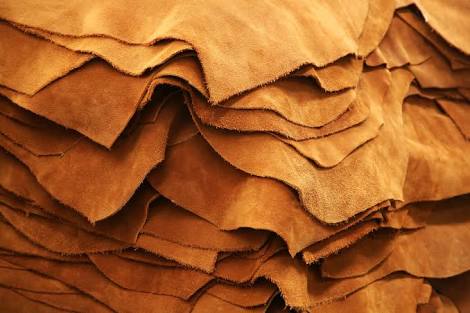
BY ABEBE WOLDEGIORGIS
The second Growth and Transformation Plan targeted that by the end of the plan, Ethiopia would earn one billion USD from the leather and leather products export. But due to scarcity of hard currency for importing spare parts and chemical inputs, some leather industries are producing bellow their capacity while others are unable to continue production and found themselves at the verge of their demise.
Tatek Yirga is the Ethiopian Leather Industry Association President. While reflecting his views during a recent panel discussion prepared by the Ethiopian Broadcasting Corporation, he said that Shoes factories have no access to get foreign currency from banks but they contribute a great deal of forex to the nation’s currency earning through exporting finished and unfinished leather products.
Currently, the leather factories are facing financial uncertainty and the banks have little interest to providing loan to the industries. And if these factories are shut down, the abundant raw hide and skin products will never get market opportunity and have negative effect on the whole value chain of the leather industry.
As to him, in India and Bangladesh, leather industries are well performing because the governments provide them with incentives besides the other package of support and good policy environment.
“30 and 40 years ago, their industries production and competition capacity was similar to Ethiopia but today they are far ahead of us,” he said.
As to Tatek, in Ethiopia, though environmental protection is essential for sustainable development, leather industries have been forcefully obliged to install waste treatment plant. This which consumed their working capital and the requirement has become beyond their financial capacity.
Unlike here, in India and Bangladesh, governments totally cover the cost of installing waste treatment plant to share the financial burden of factories.
Incentive also is provided to them through “Rebating plan.” Through the plan, leather industries in India and Bangladesh will export their products and when they get hard currency the governments give 25 percent of the forex as incentive in local currency by the formal exchange rate. Therefore, how could the Ethiopian leather industries compete with these countries? The static nature of policies in Ethiopia hampers the industries not to use their full capacity. It is 80 percent of the hide and skin that is utilized as input for the leather industry which is locally obtained. The remaining 20 percent is imported from abroad.
Redman Bedada is the manager of the Mojo Leather Factory and was the participant of the panel. As to him, the major inputs are the skin and hide. The high land sheep skin is a high quality which has high demand in the world market. Countries identified the high quality of Ethiopian Sheep skin 100 years ago.
Processing the skin to change in to leather takes much time and utilizes inputs such as chemicals, salt and Sulfuric acid.
Salt is obtained from local market but importing chemical which is the small proportion of the input, due to little attention paid to the sector, takes one year.
Leather industry has high job creation capacity with minimum capital and produce goods which draws foreign currency. One can observe real value addition in this sector but by now even big leather industries are at the verge of their collapse.
It is hard to the industries to cover the overhead cost, pay workers salary and other expenses by producing 20 or 30 percent of their working capacity. Not only these, the indebted industries are unable to refund the money as the result, some factories are sold by bid.
It is amazing that, in the last 10 years while local shoe industries are closed down, new foreign owned shoes factories are flourishing.
The Ethiopian Leather Industries Association General Secretary Daniel Getachew on his part said that, in order to produce quality leather and leather products, sufficient inputs should be supplied but it is hard even to get salt which is locally produced in Afar region because its price is becoming skyrocketed by unknown reason.
Sadly, some companies which import leisure items can easily get hard currency from banks whereas, producing companies which export their products and create job opportunities for hundreds unable to get. In similar way, car importers never complain with regard to access to foreign currency and one can observe many cars stored for sell here in the capital.
On the other hand, limestone is a vital input for processing skin and hide but among the many cement factories, only one factory produces limestone and the amount of the product due to various reasons is insufficient.
As the result, leather industries suffer a lot to get input at the needed amount. The price of one kilogram of salt utilized for softening the skin rose to 10 Birr. Purchasing locally obtained inputs in high price makes the industry incompetent in the international market.
By importing the 1000 Dollar spare parts, the industries can export leather products worth 50 million Dollars, but due to the restriction to get the currency, many chances are lost.
The Leather Industries Association president Tatek Yirga said that the nation is earning Dollar but to answer the question where does it go, looking the situation critically is vital. Previously, exports were conducted through commercial banks. Currently, however, 80 to 90 percent of the export is conducted through various private banks. These banks provide dollar to the exporters. Formerly, the leather industries with huge employee obtained Dollar from Commercial Bank of Ethiopia but today not. Therefore, the problem lies on the policy.
“Now exporting companies import other goods by the Dollar obtained from export goods. Where ever you go in the market, you can get imported goods easily because exporters which have easy access take the currency,” he said.
Hence, unless the policy is improved reviving the collapsing leather industries is impossible, he stressed.
THE ETHIOPIAN HERALD JANUARY 15/2021




